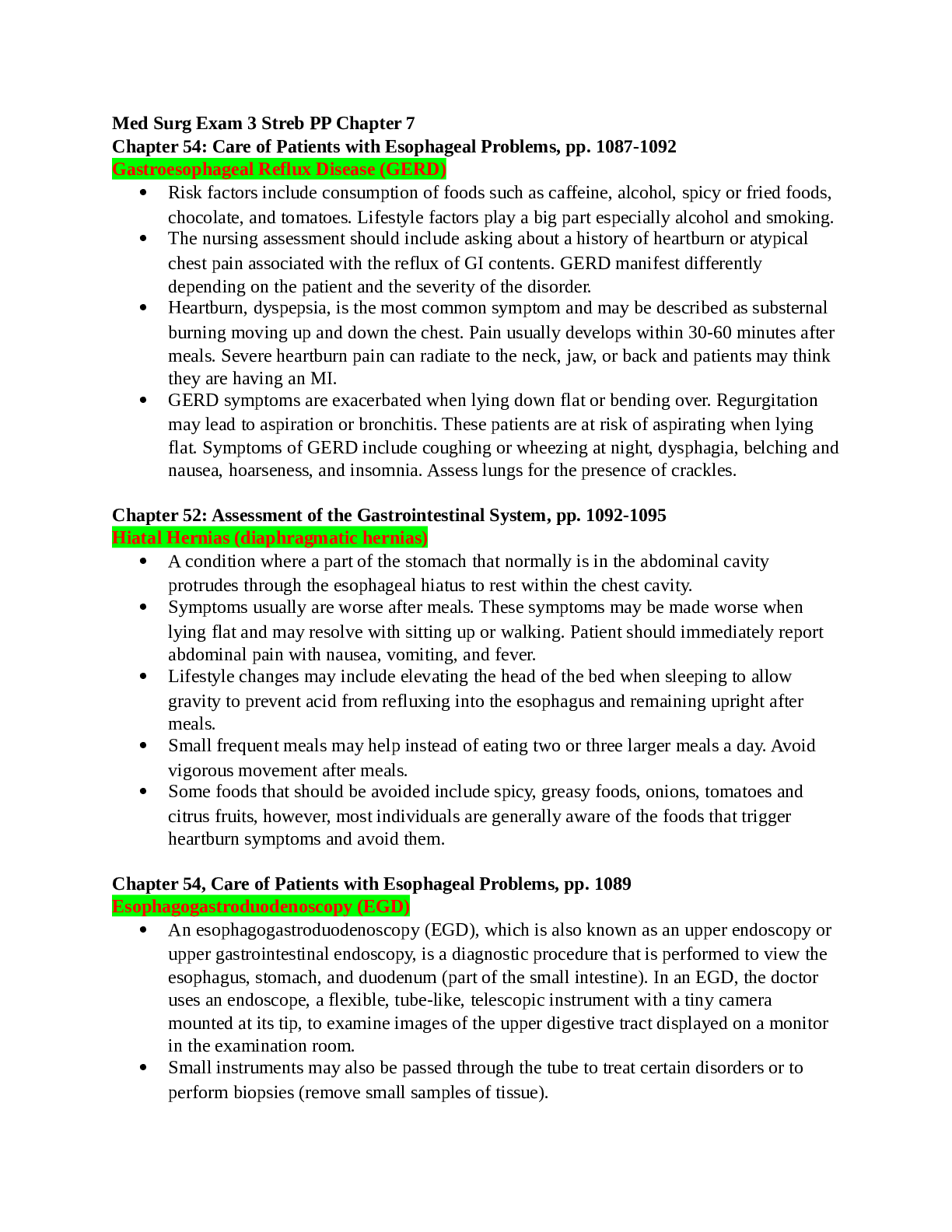*NURSING > MED-SURG EXAM > NURS 3320 MED SURG EXAM 2 {2020} – Northeastern University | NURS3320 MED SURG EXAM 2 (All)
NURS 3320 MED SURG EXAM 2 {2020} – Northeastern University | NURS3320 MED SURG EXAM 2
Document Content and Description Below
NURS 3320 MED SURG EXAM 2 – Northeastern University Med Surg Exam 2 Management with Diabetes Care of Patient with Diabetes Diabetes • About 26 millions people with diabetes in US alone ... o Huge problem in the US • Many undiagnosed o 1/3 undiagnosed: so not treated • Higher risk population include African American, Native Americans and Hispanic population o Develop complications higher risk of mortality o Complications of unmanaged diabetes: Non-traumatic ambulation Blindness Kidney disease Heart attack and stroke o Hospitalization rate 2.5 x greater than healthy adults and 5x greater for children Risk Factors • Family History • Obesity • Race/Ethnicity • Age o Over 45 years old • Previously impaired fasting glucose or impaired glucose tolerance • Hypertension o Greater than 140/90 • High cholesterol or triglycerides • Gestational diabetes o Delivered a baby larger than 9 pounds Patho Review • Type 1 and type 2 o Gestational and pre-diabetes • Disease of the pancreas o Islet of Langerhans: endocrine islet cells o Beta cell: secrete insulin o Insulin Takes glucose in blood to area that need it Tells livers and muscle cells to form glycogen stores Enhances stores of dietary fat in adipose tissue Speeds transport of protein in cells Inhibits breakdown of stored fat Type 1 Diabetes • No insulin • Insulin dependent, juvenile diabetes, childhood onset • Beta cells are destroyed o Alpha cells release glucagon (release stored glucose) • Little to no insulin production o Insulin is usually always released in small basal amounts • Insulin cannot do its job hyperglycemia occurs • In short: o Beta cells destroyed o Little/no insulin production o Insulin cannot do its job o Hyperglycemia • A metabolic disorder marked by NO insulin production or secretion from the destruction of the beta cells in the islet of Langerhans in the pancreas Type 2 Diabetes • Adult onset or non-insulin dependent diabetes • Most common • Obesity is primary risk • Insulin resistance • Impaired insulin secretion • Risk factors: o Obesity o Growing in children due to obesity • Aspects: o Insulin resistance o Impaired insulin resistance • Pancreases: o Secrete insulin but body can’t utilize it glucose in blood More insulin secreted Beta cells cannot keep up • A metabolic disorder marked by insulin resistance and impaired insulin secretion Diagnosing Diabetes • Radom plasma glucose levels of >200mg/dL o At anytime of the day • Fasting plasma glucose levels or > 126mg/dL o No calorie intake for 8 hours • 2 hour post-load glucose =200mg/dL o Oral glucose tolerance test 75 g of anhydrase glucose • Diagnosis is a plasma reading: finger stick Assessing patient with Diabetes • History o Blood sugar history o How much insulin: how does the patient respond o Are they alert and oriented times 3 • VS o Orthostatic hypotension o Hypertension • Pt history o Symptoms related to diagnosis o Hyperglycemic o How often does the pt become hypoglycemic: How do they treat it Any certain time during the day o Blood sugar monitoring How often do they check it What device do they use o Management of diabetes Any issues (GI PVD o Diet Low carb? How well do they follow diet o Exercise How often do they exercise What is their exercise routine o Are the able to follow diabetes treatment o Any complications due to diabetes • Physical exam o Height and weight o Skin assessment, lower extremity Any neuropathy o Pulses o Neuro checks Any sensory deficits o Oral exam o Hair distribution o Any open areas or signs of infection o Is there sensation in the toes? o GI: Bowel sounds Look at bowel patterns • Keep in minds o Insulin hypodystrophy/ hypertrophy Fatty deposits or hard areas • Due to injection o Teach rotation of injection site • Labs o Blood glucose monitoring Hypoglycemia protocol • Juice • Rec-check • Administration of glucagon or IV dextrose o Hemoglobin AIC Overall picture of management of blood glucose o Fasting lipid o Microalbumin o Kidney BUN Creatinin o Urine analysis Goal • Normal Blood Sugar o 70- 100 mg/dL o >180 after eating o Hemoglobin: AIC: below 7% • Keep blood sugar controlled • Goals: depending on assessment o Compliance of diabetic management • Goals: o Compliance of diabetic regimen o Medical management o Exercise Intervention • Monitor blood sugars o Check before meals, 9am , 3pm • Assessment o Include pt compliance and understanding • Administer insulin o Long acting: maintain basal rate o Rapid acting: for prancial spike o Sliding scale: based on glucose readings • Diabetic diet o 50-60% carbs (whole grains) o 20-30% fats o fiber lowers blood glucose o Exercise: helps maintain healthy weight • Monitor other labs • Pt teaching: o Teach about changing habits o Signs and symptoms of hypo/hyper glycaemia o Maintain diabetic diet o How to administer insulin Pt teaching • How does your patient learn o Brochure o Demonstration o Teach back • Diet: o 2 starch, 3 proteins, 1 veg, 1 fruit, 1 fat, “free item” o Encourage steady low carb diet o Encourage them to keep a log Document eating Blood sugar What insulin used o Limit alcohol consumption - - - - - - - - - - - - - - - - - - - -- o Dark urine • Prevention • Management o Treat symptoms and psycho social issues/concerns o Minimize spread o Minimize damage to liver o Administer anti-viral agents o Make sure getting adequate nutrition o Promote bed rest Hepatitis C • Transmitted via blood and body fluids o No vaccine • Health care workers at risk due to needle sticks • The most common chronic blood born infection • Risk factors o Needle sticks o Sharing needles • Before 1992: blood not screened for Hep C o Children born to Hep C mom at risk • Clinical course o 15-160 day incubation o Symptoms GI symptoms o Increase risk for cirrhosis and liver cancer o Alcohol makes disease progression worse o Medical treatment: anti-virals Hep D • Delta agent • Assicated with and similar to Hep B o Similar risk factors, incubation o Symptoms: flu like Likely to develop hepatitc failure • Treatment: o Anti-viral o Rate of re-occurrence is high o Minimize risk factors Hep E • Develop Jaundice • Fecal oral route, similar to A o Contaminated water, poor sanitation • Abrupt onset, self limiting o Has to run its course o Limited treatment • No Chronic Form • Incubation: 15-65 days Nonviral Hepatitis • Toxic Hep o Exposure to chemicals, medications, botanical agents, alcohol, pain relievers, herbs and supplements, industrial chemicals o Recovery may be rapid removal of the toxic agents o Bad enough exposure leads to fulminant hepatic failure • Drug Induced Hep o Acute liver failure o Onset: chills, fever, rash, nausea, anorexia Symptoms can go away if drugs stop Tylenol most common caused • Remove drug and hoping damage can be reversed • High dose of corticosteroids • Fulminant Hepatic Failure o Acute liver failure o As a result of non-viral hepatitis o Develops within 8 weeks of jaundice Hyper acute, sub acute, and acute o Outcome not great Potentially reversible 20-50% survival rate Care and Management of Patients with Biliary Disorders Gallbladder • Sac like organ on inferior aspect of liver o When you eat bile is secreted o Gallstone= hardened bile o Blockage: pain when eating • Contains bile, H20, and electrolytes • What if there is an obstruction • Cholithiasis: gall stones • Cholicystitis: inflammation Pancreas • Many endocrine and exocrine function • Alpha cells= glucagon • Beta cells= insulin • Delta cells= somatostatin • Digestive enzymes o Amylase: carbs o Trypsin: proteins o Lipase: fats Gallbladder Disease • Cholecystis o Can be acute or cronic o Inflammation of gallbladder o Obstruction causes gallbladder to fill up can rupture • Cholelithiasis o Gallstones o Build up of bile salts and cholesterol • Risk Factors o Obesity o Multiple pregnancy o Native America, south/west Spanish o Weight fluctuation/ rapid weight loss o High dose estrogen treatment o CF o Diabetes • Clinical Manifestation o Pain in right upper quadrant o Jaundice o Change in urine or stool o Vitamin deficiency • Treatment o Focus on pain o Diagnosed with X-ray/ ultrasound o Surgically remove stones or the gallbladder Pancreatitis • Acute of chronic inflammatory disorder • Auto-digestion of the pancreas o Exocrine function of the pancreas o Hyper secretion due to blockage and digests pancreas instead of food o Risk factors Choliocistics, viral, bacterial, alcoholism, peptic ulcer, hyper lipidemia, hyper calicemia, steroid use • Medical emergency o Can be fatal • Clinical Manifestation o Severe pain in abdomen and back Can occur after meals o Abdominal distention o Mass abdomen o Decreased bowel sounds o Rigid board like abdomen o Bruising around umbilicus o Fever o Jaundice • Labs o Increase amalyse and lipase o Hypocalcemia o Hyperglycemia o Gluocseria o Increase bilirubin • Medical Management o Treat symptoms o NPO Don’t stimulate pancreas o Parental nutrition o Manage pain Morphine o Critical care/ intensive care o Stent to assist biliary drainage Nursing Management • Nursing is aimed at managing comfort • NPO, maybe NGT o NGT: decompression • Hygiene o Good oral hygiene and mouth care • Skin integrity o Skin assessment • Fluids and electrolytes • Vitals as ordered • Preventing complication o Hemorrhage o Shock The Nursing Process • Assessments o Acute pain o Fluid and electrolyte disturbances o Ineffective breathing patterns • Plan Goals • Interventions to meet goals • Evaluate interventions [Show More]
Last updated: 1 year ago
Preview 1 out of 42 pages
Instant download

Buy this document to get the full access instantly
Instant Download Access after purchase
Add to cartInstant download
Reviews( 0 )
Document information
Connected school, study & course
About the document
Uploaded On
Jan 16, 2021
Number of pages
42
Written in
Additional information
This document has been written for:
Uploaded
Jan 16, 2021
Downloads
0
Views
48


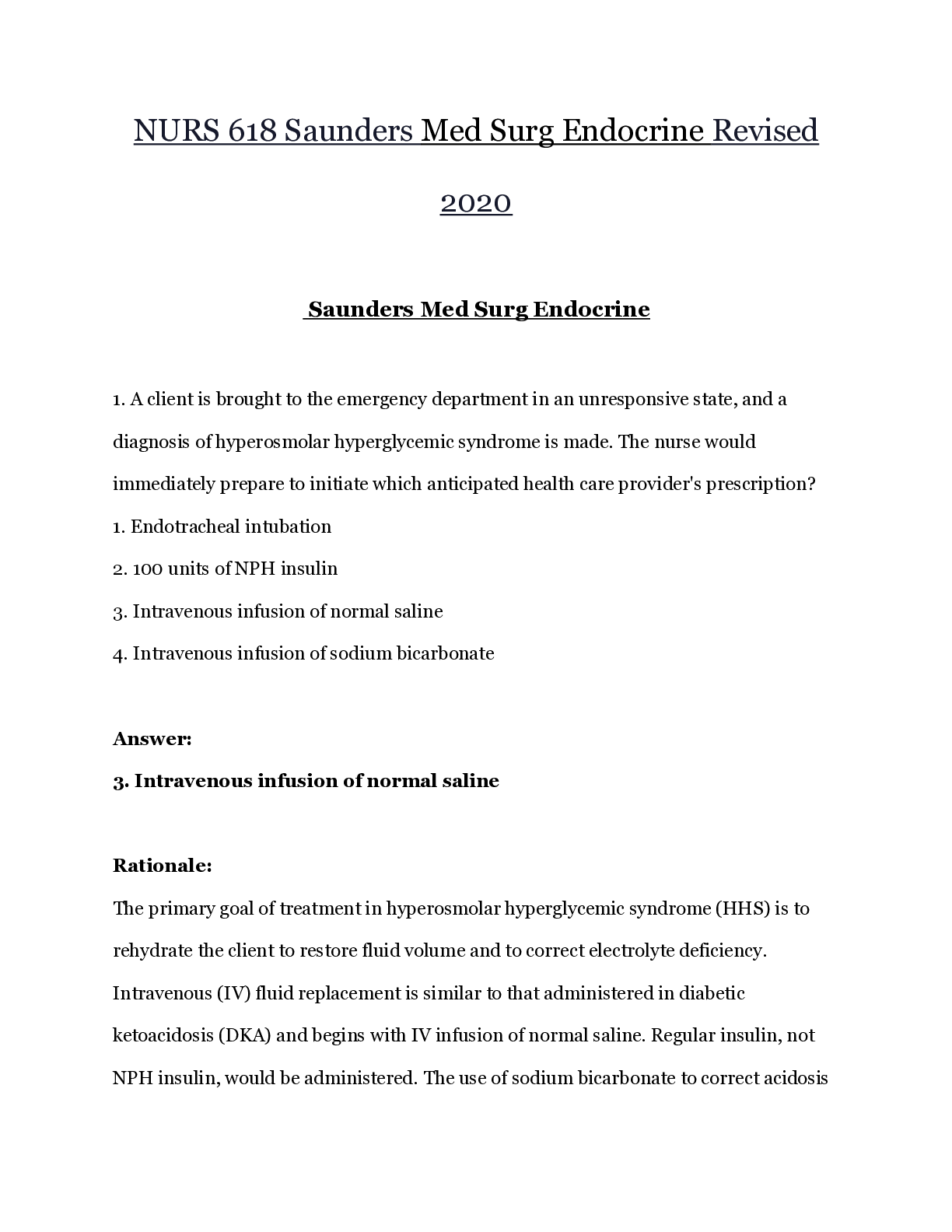
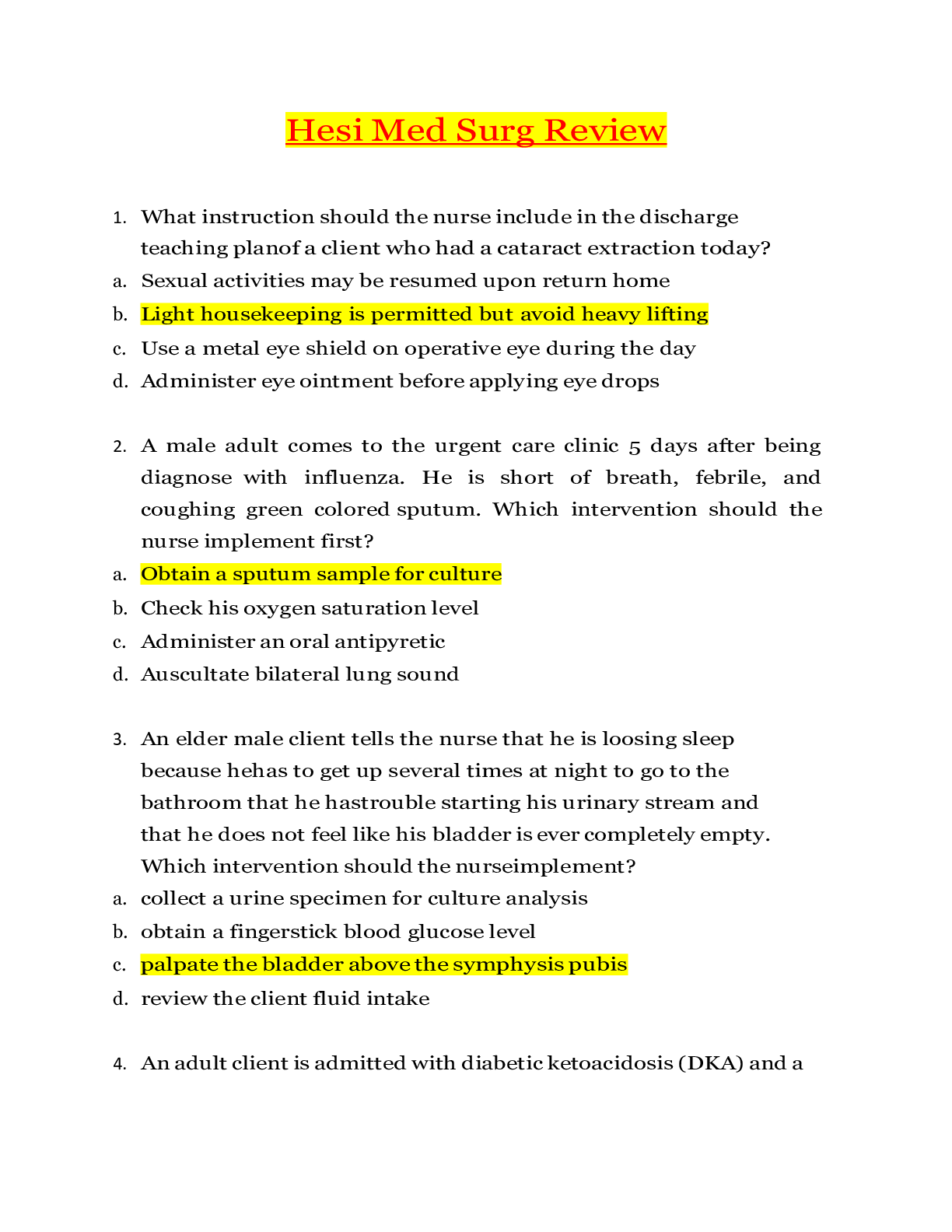
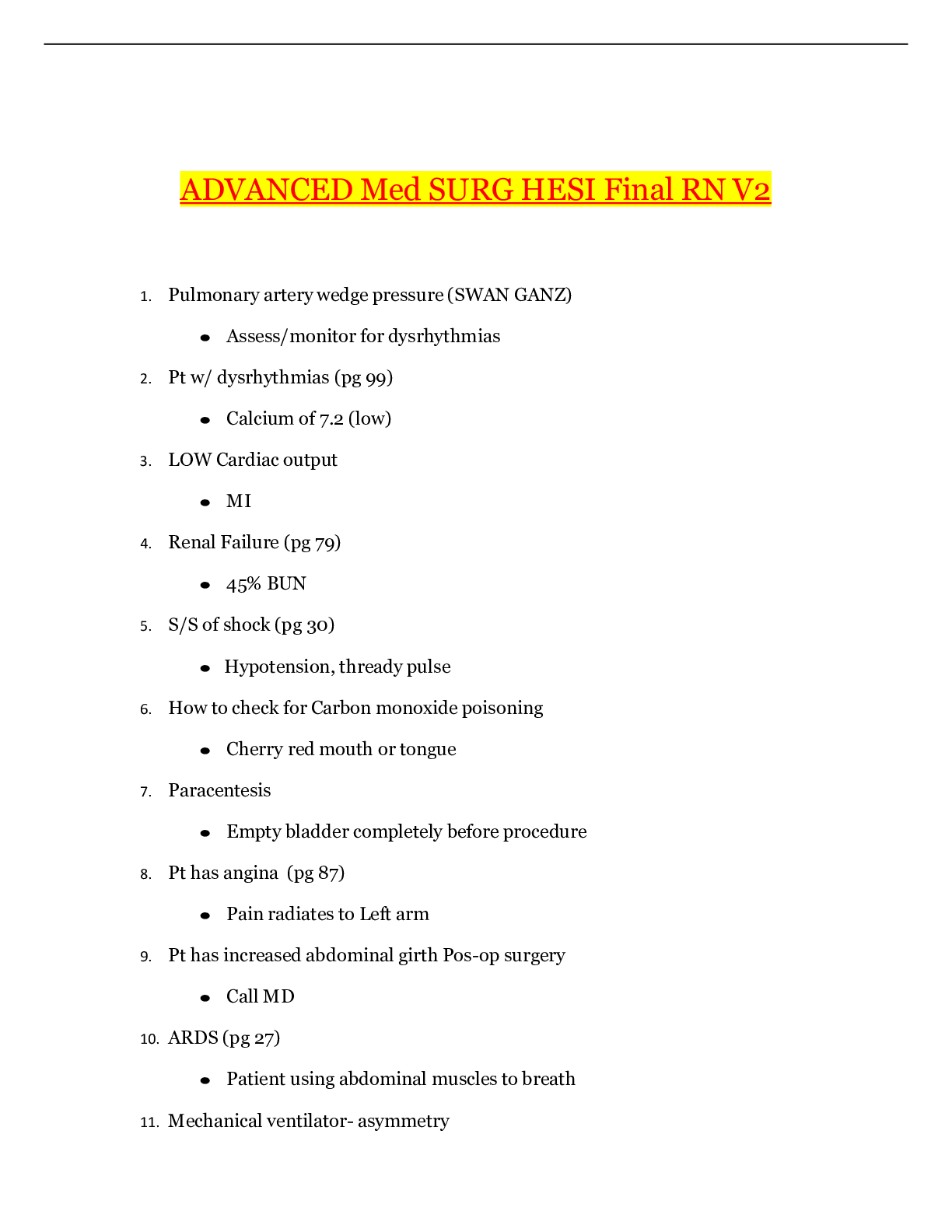
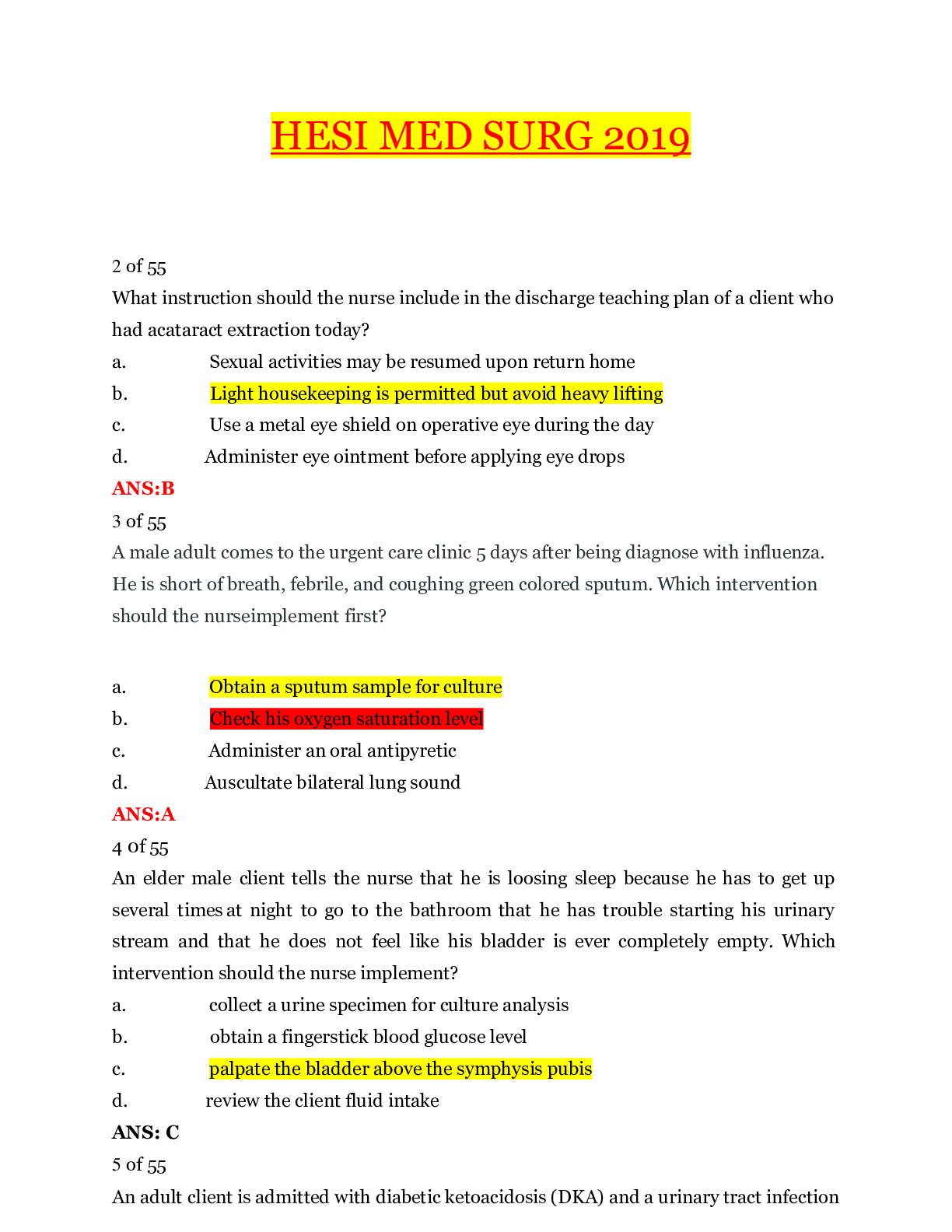
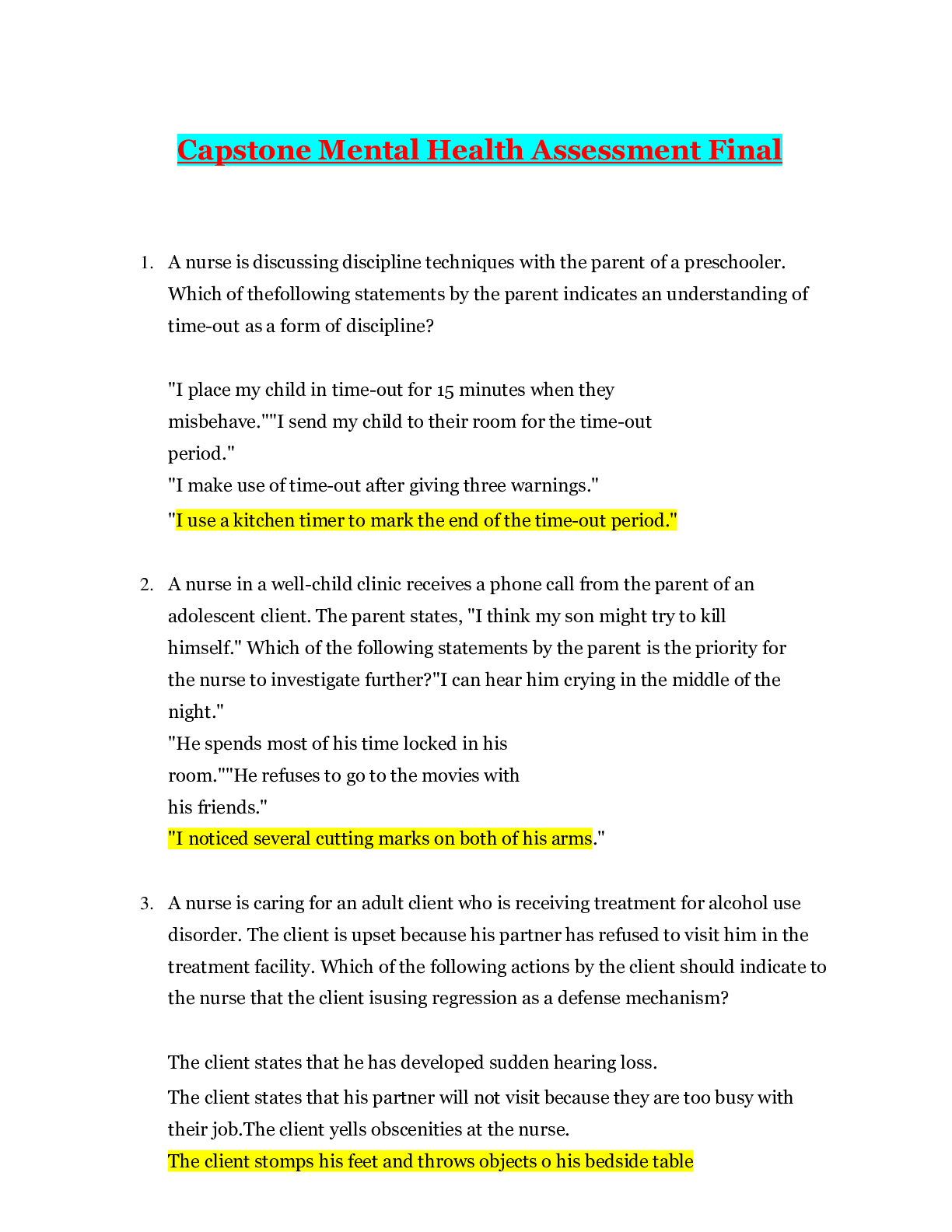
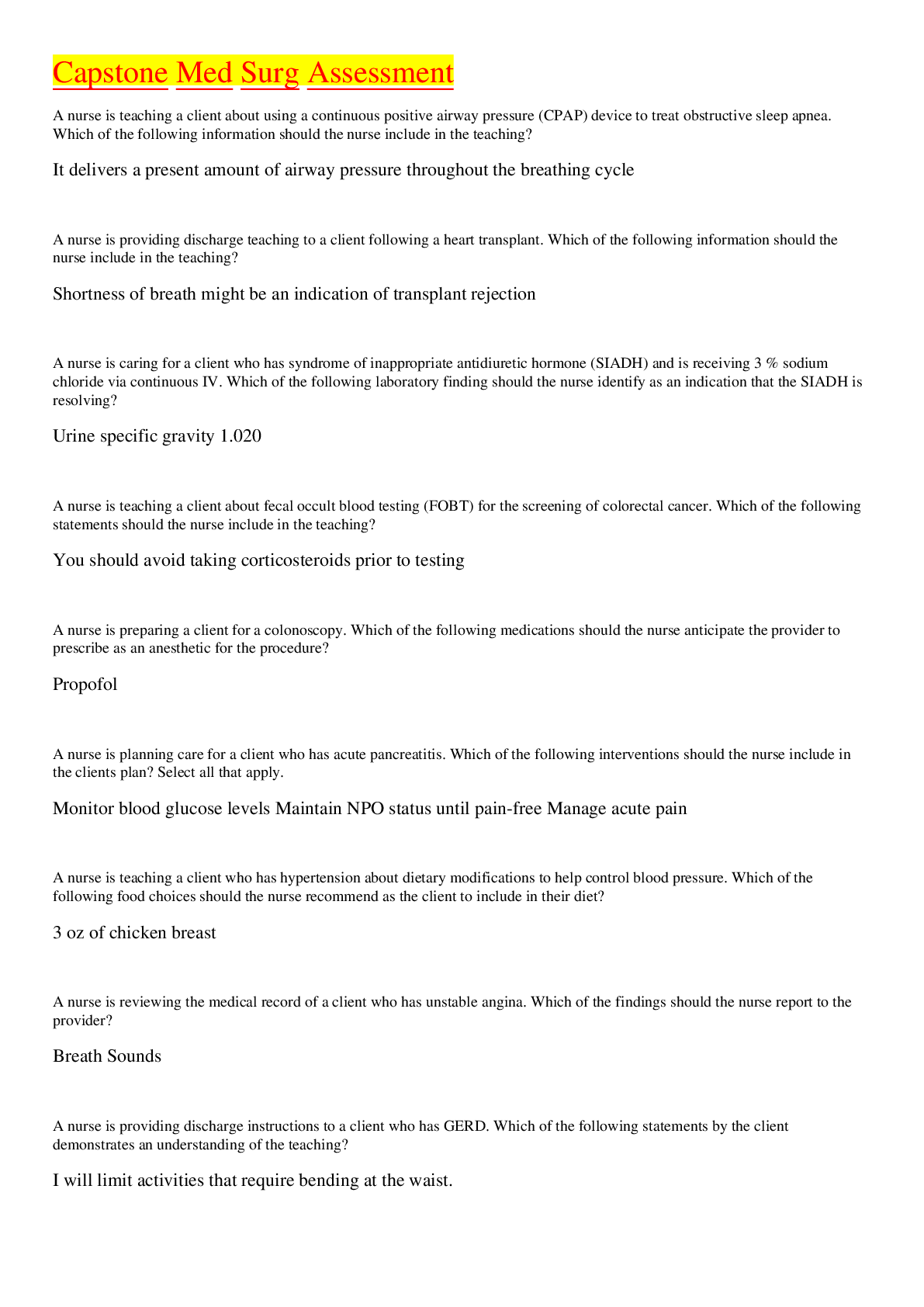

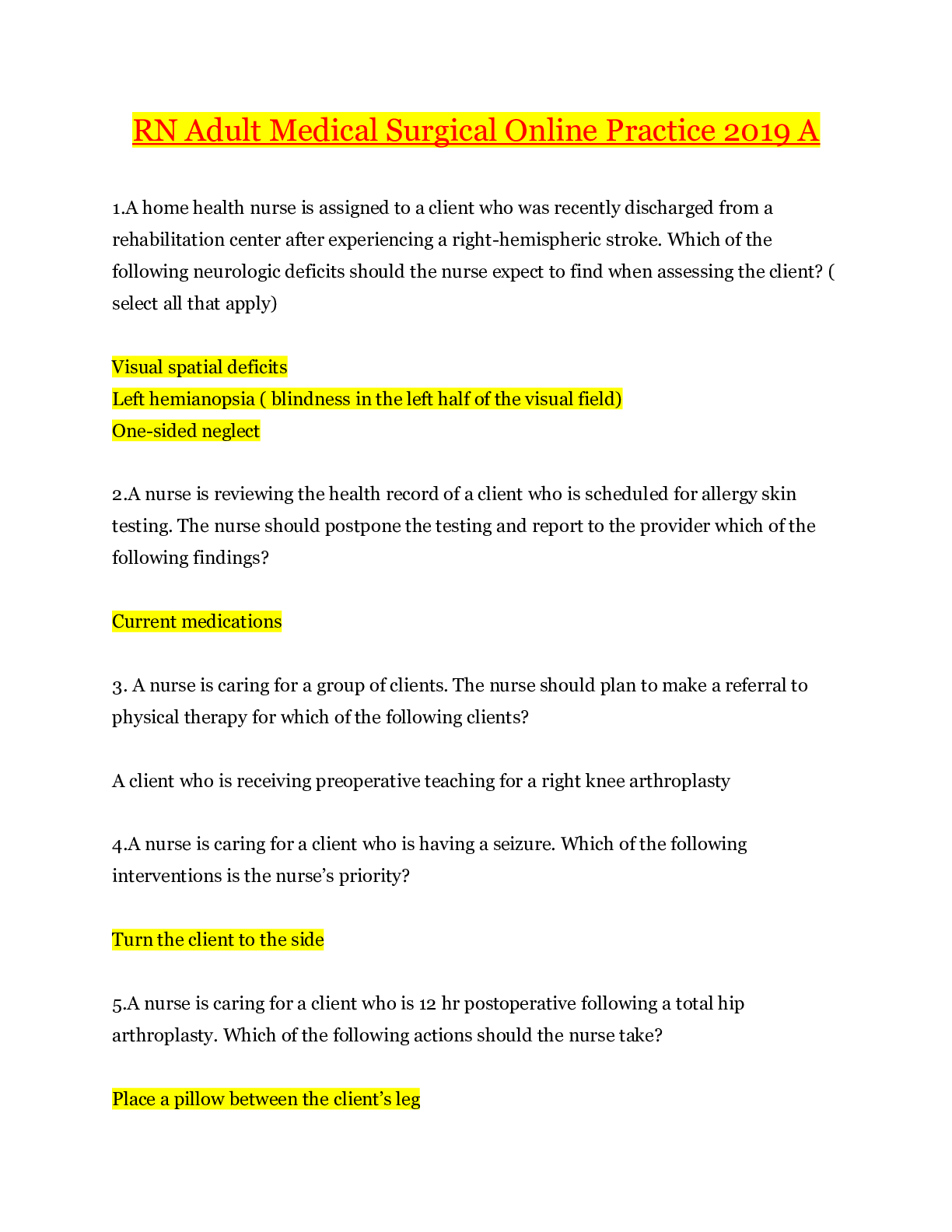
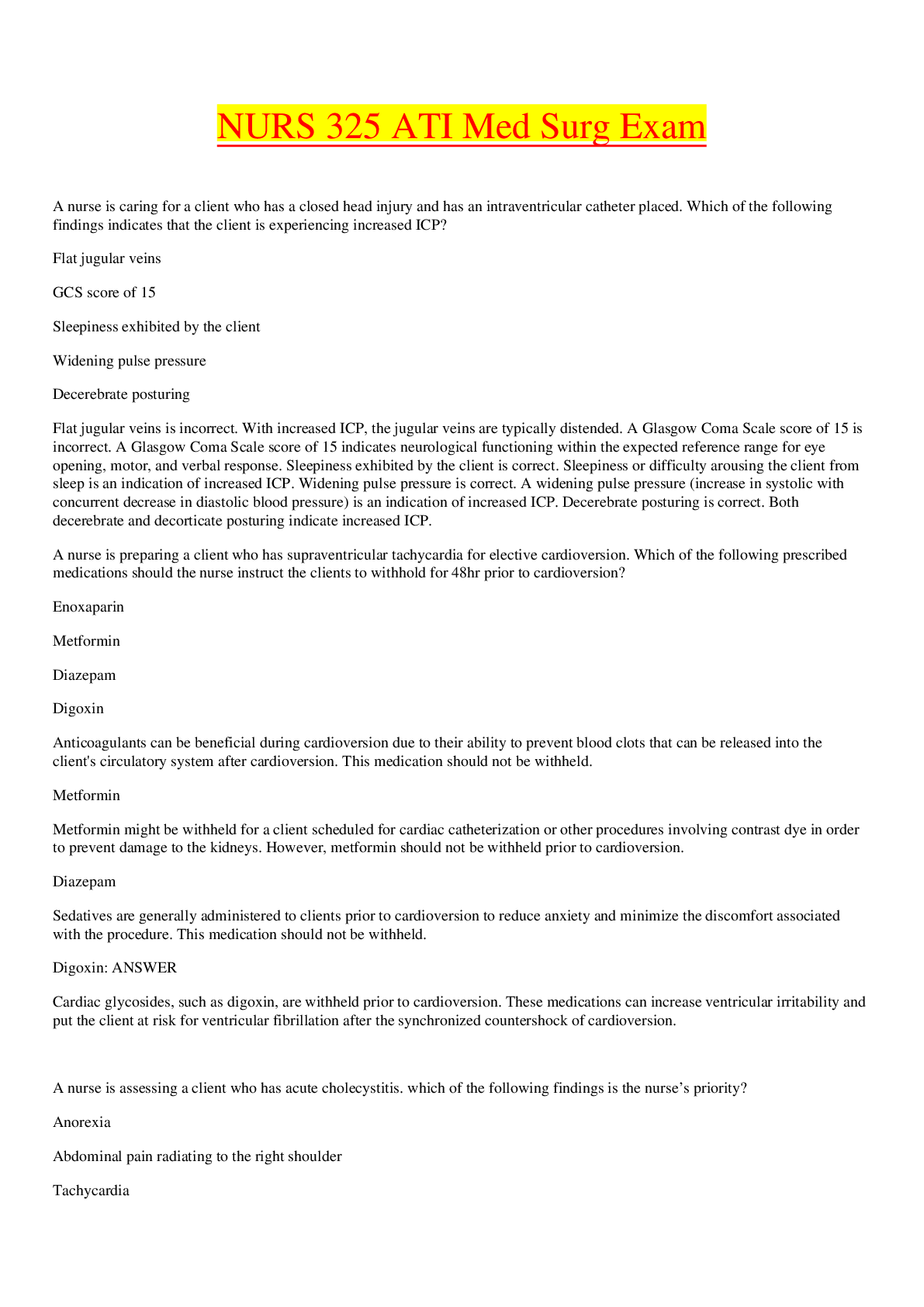
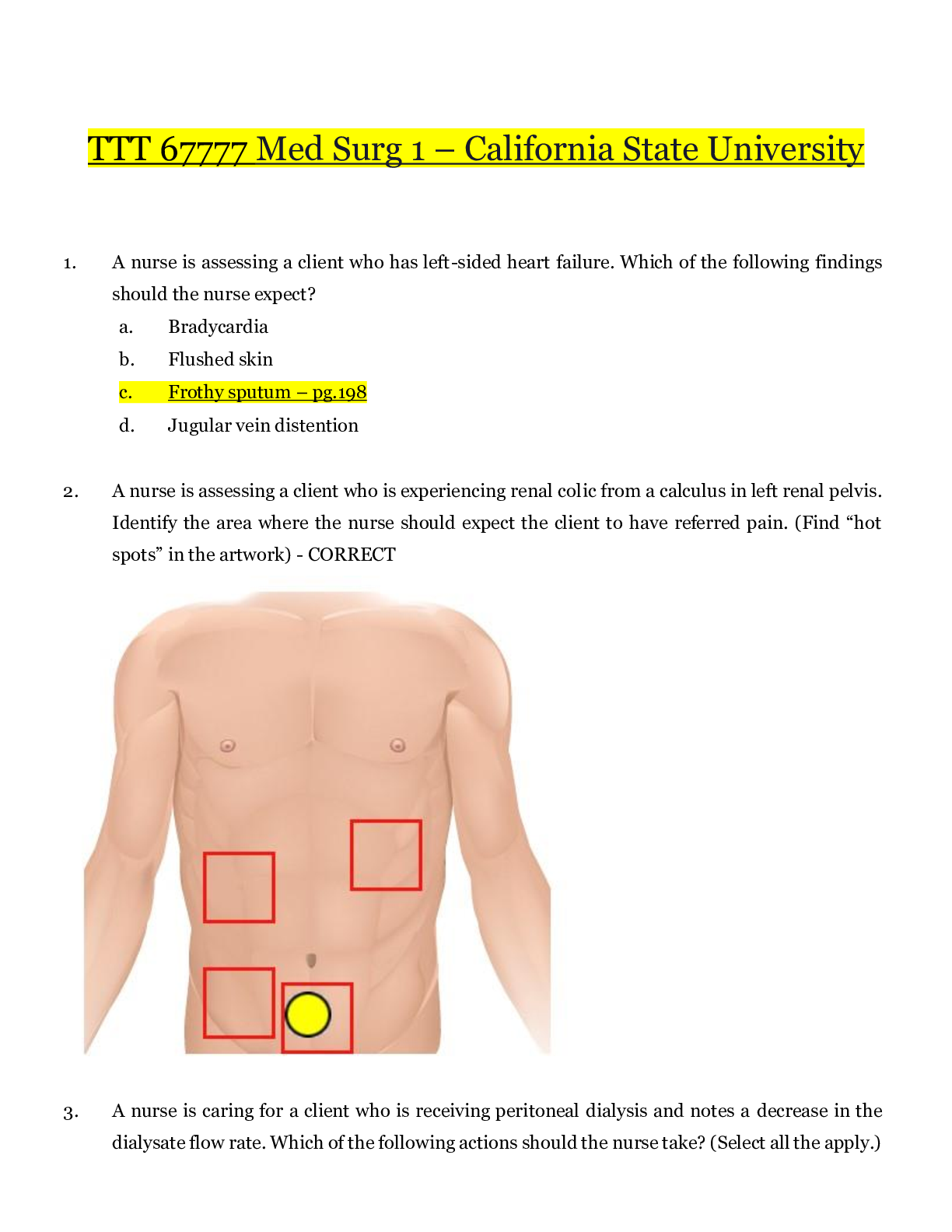
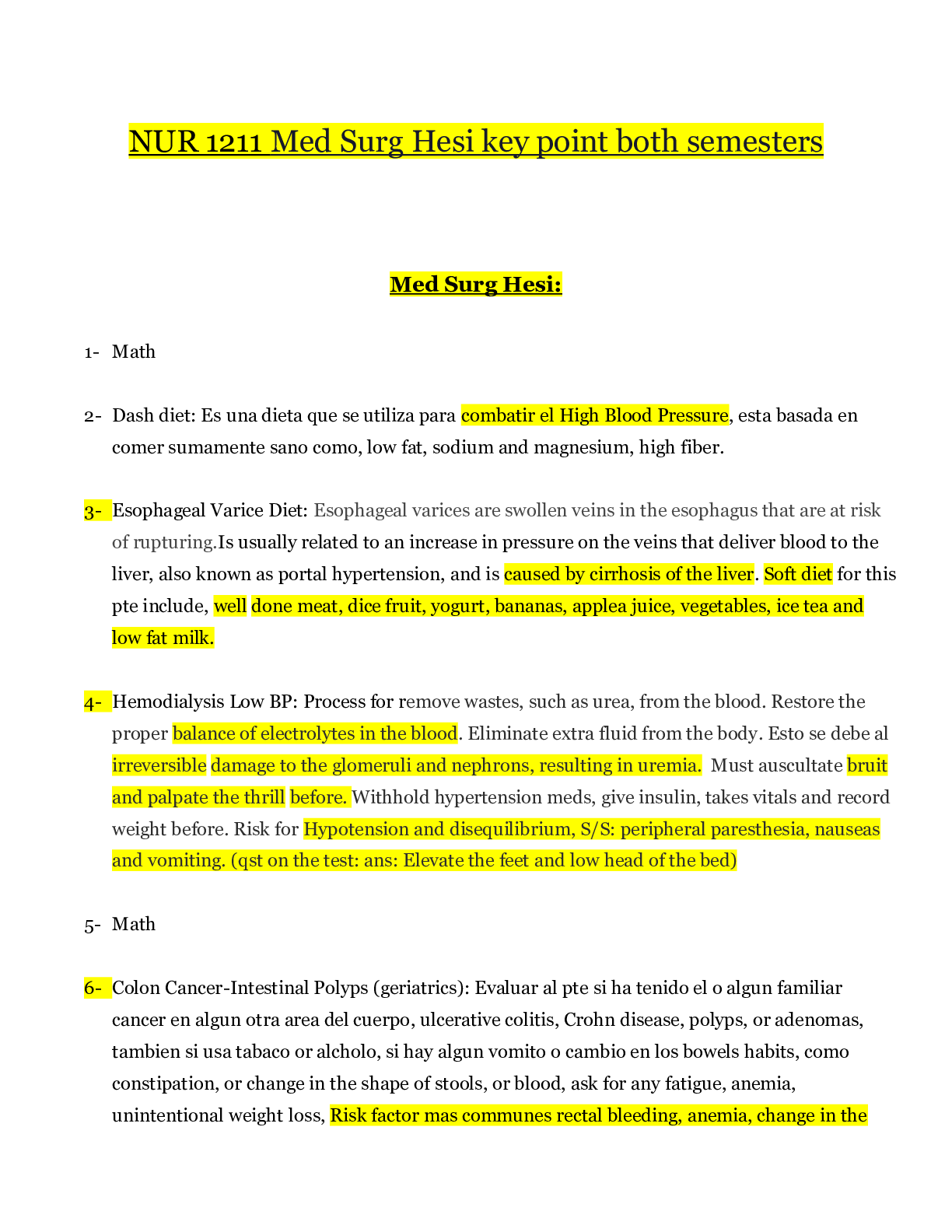
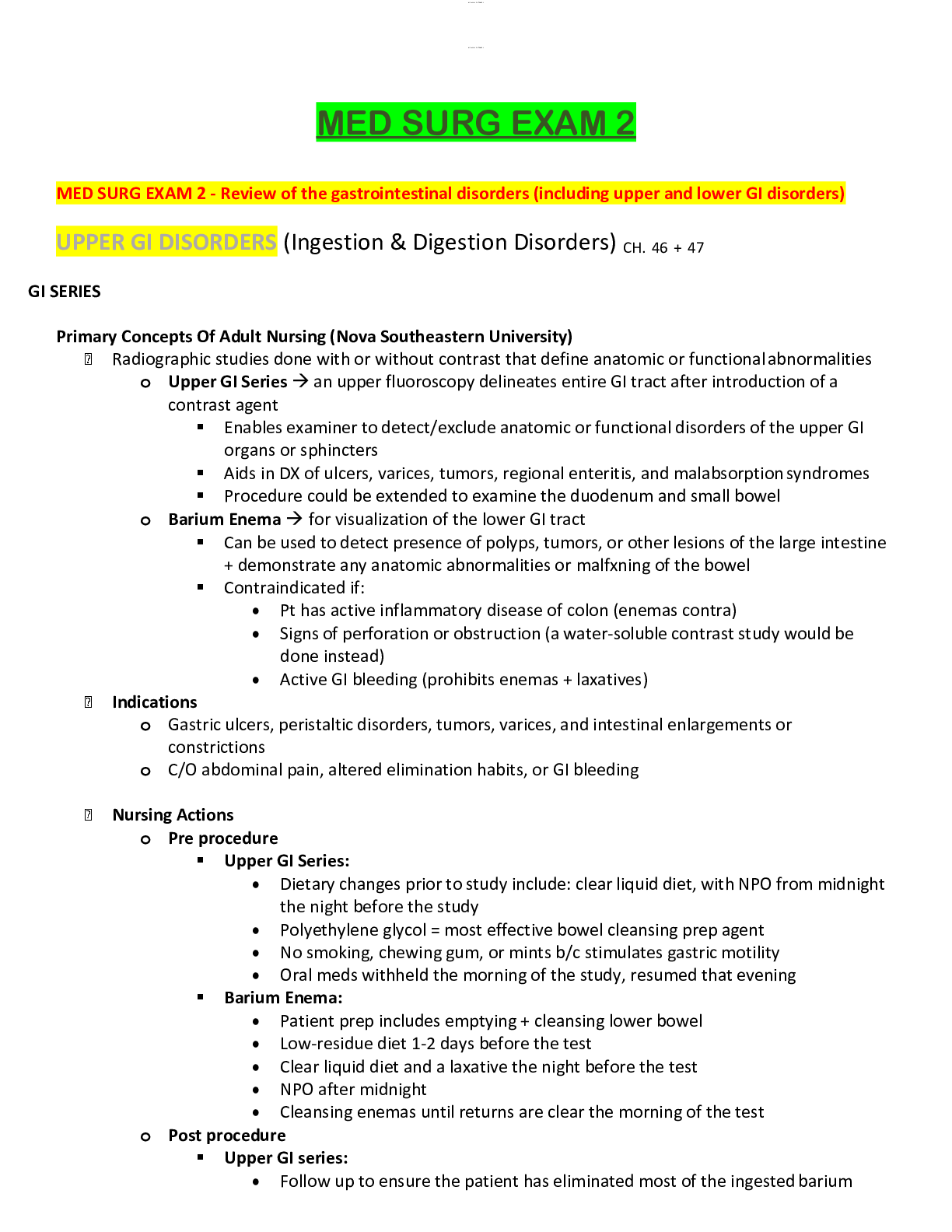

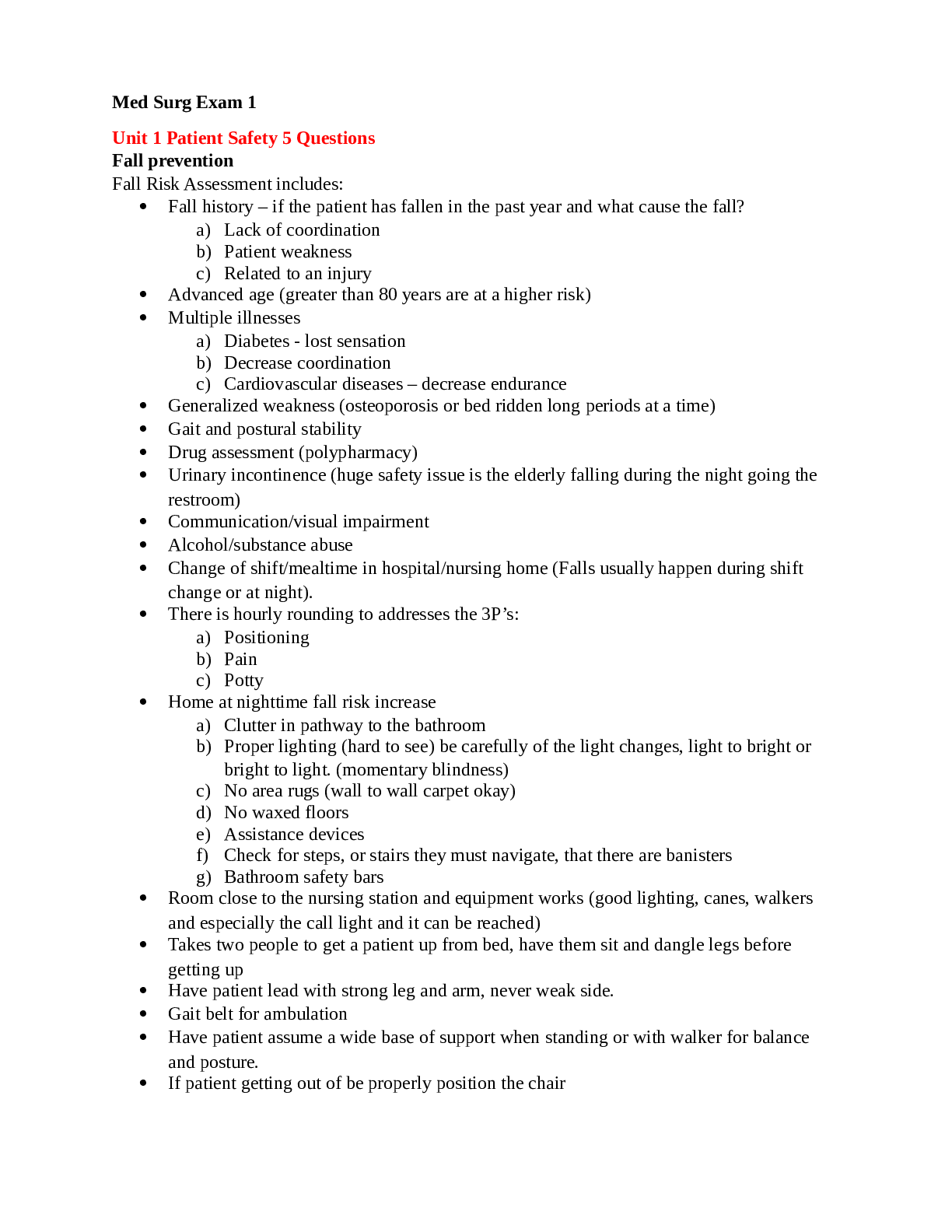


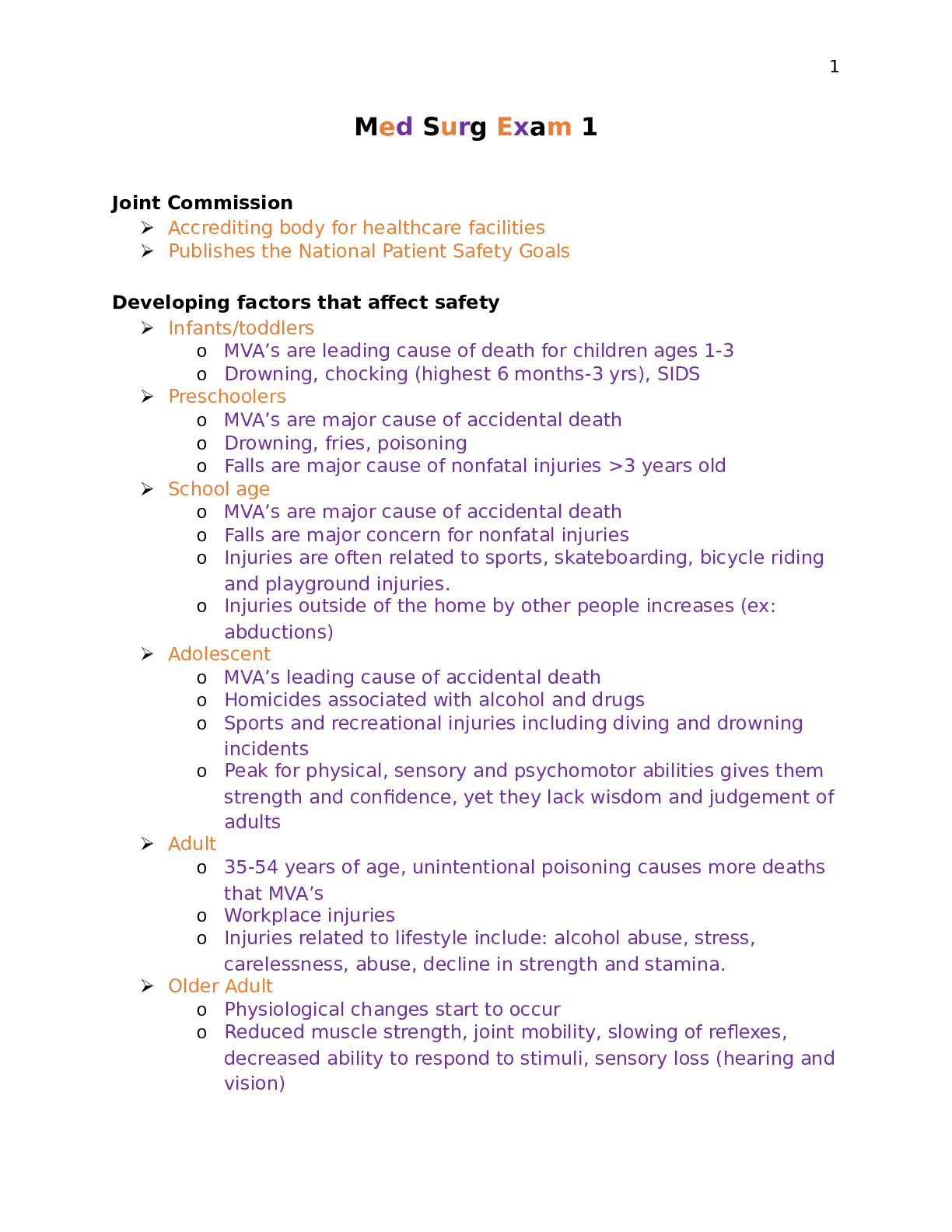
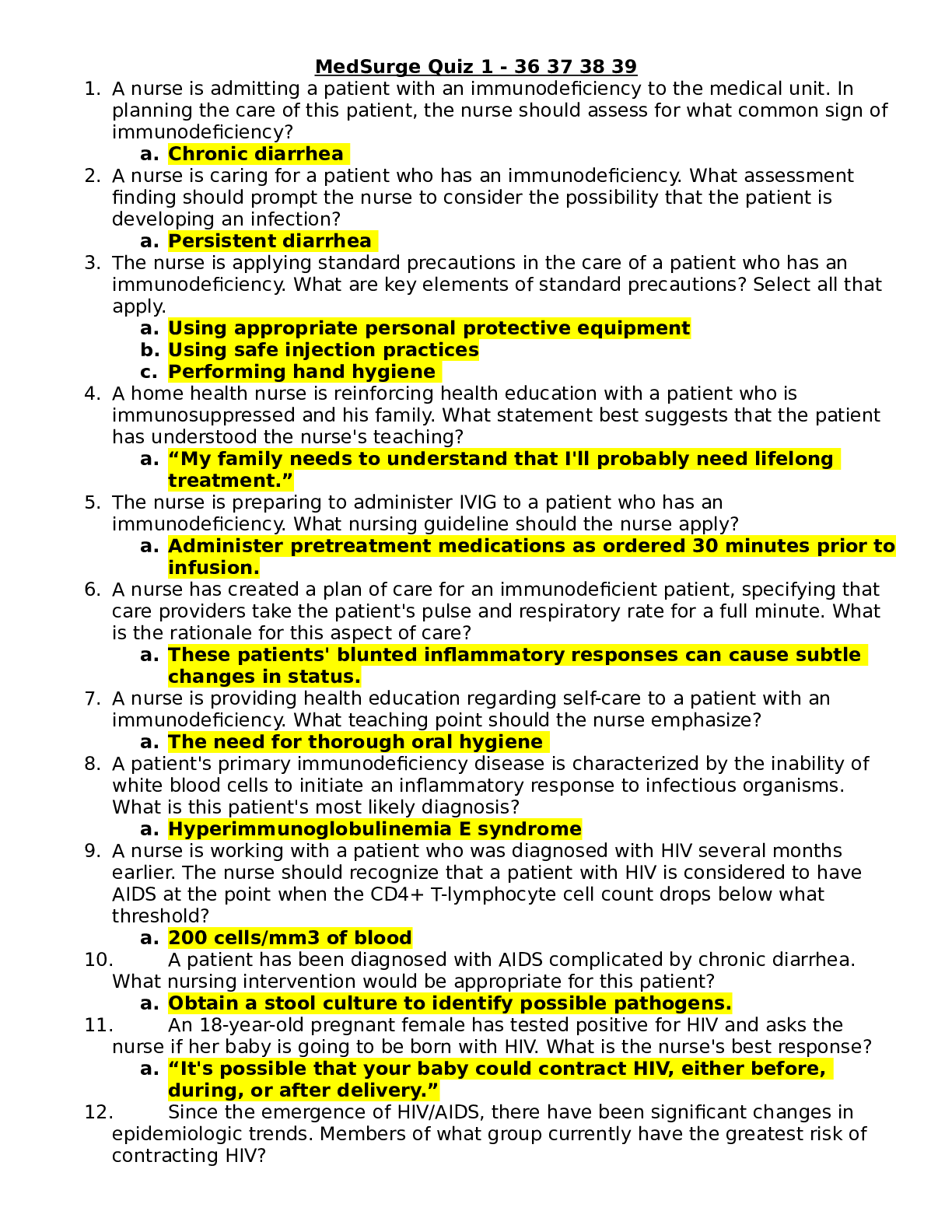
.png)
